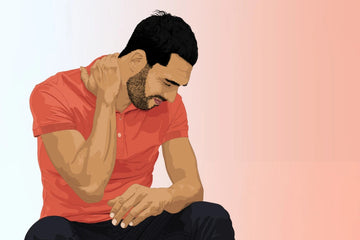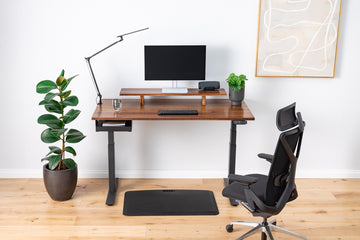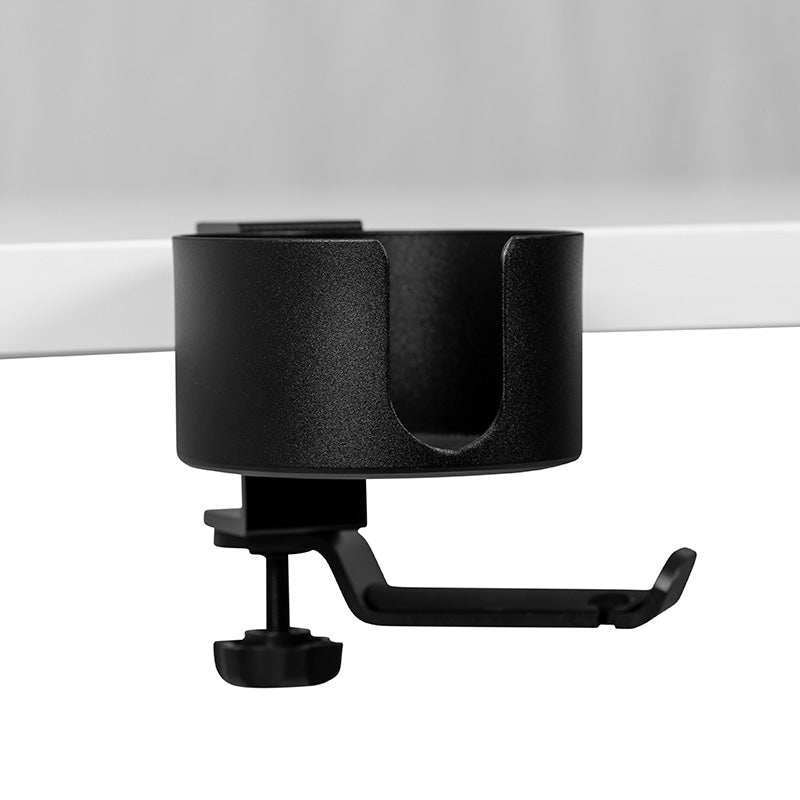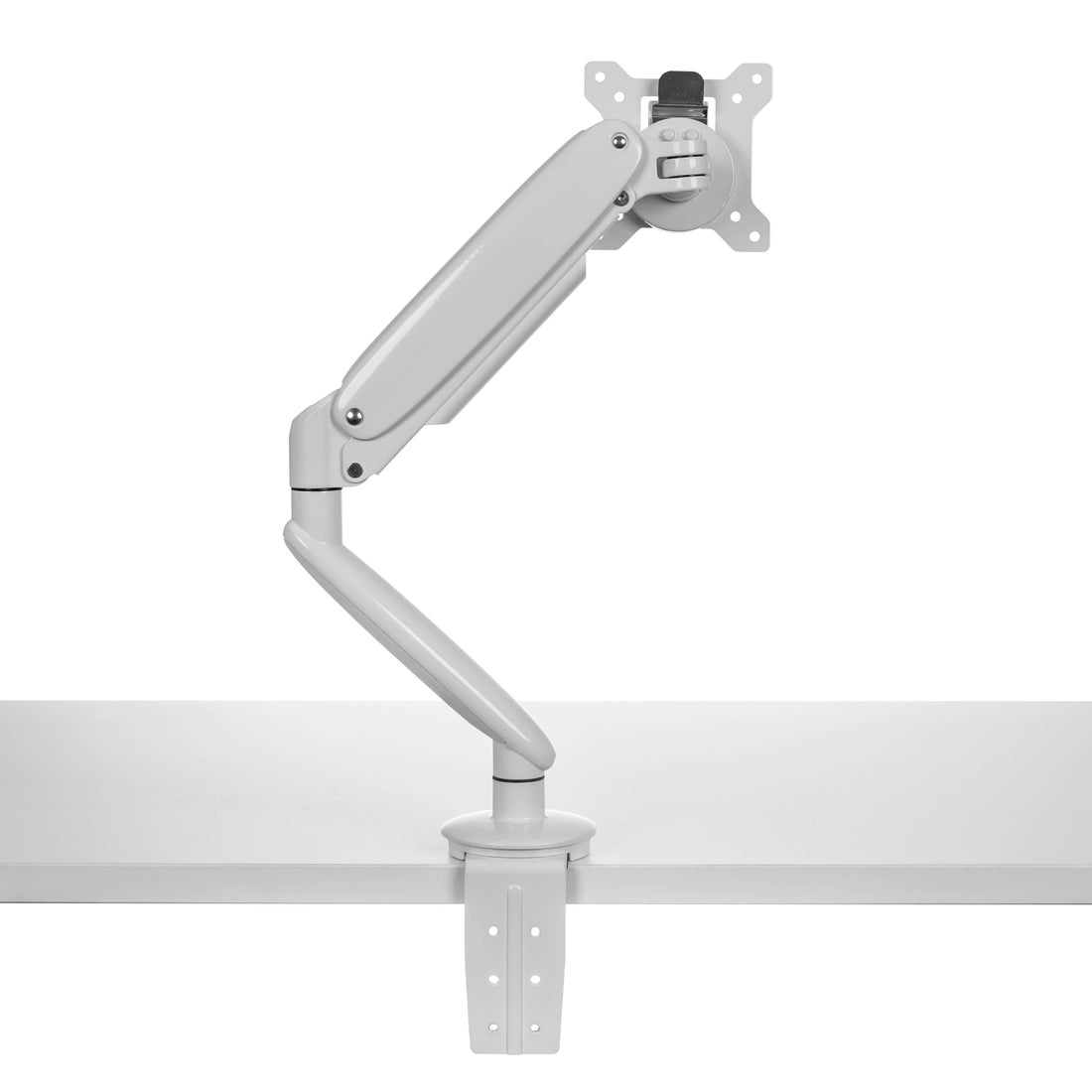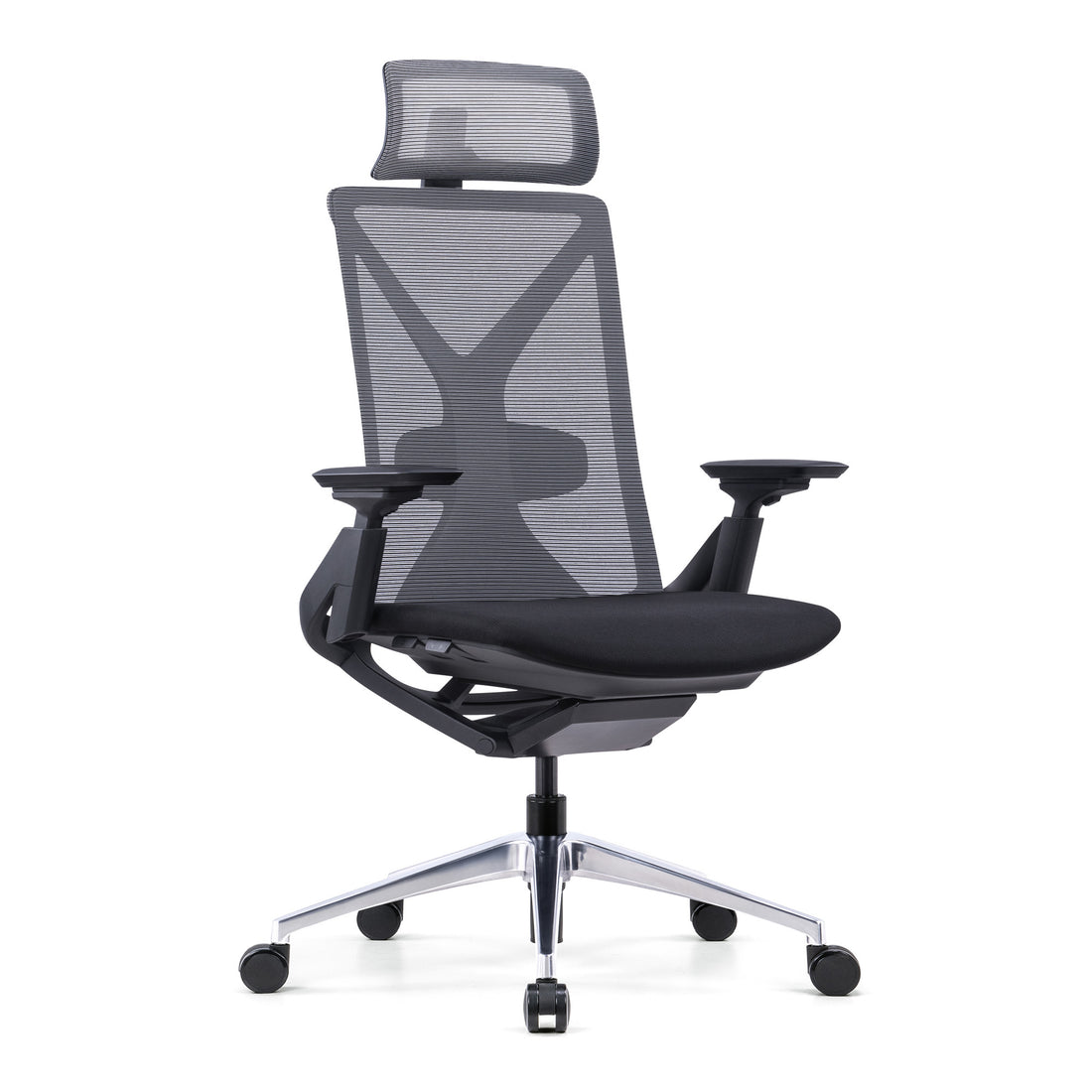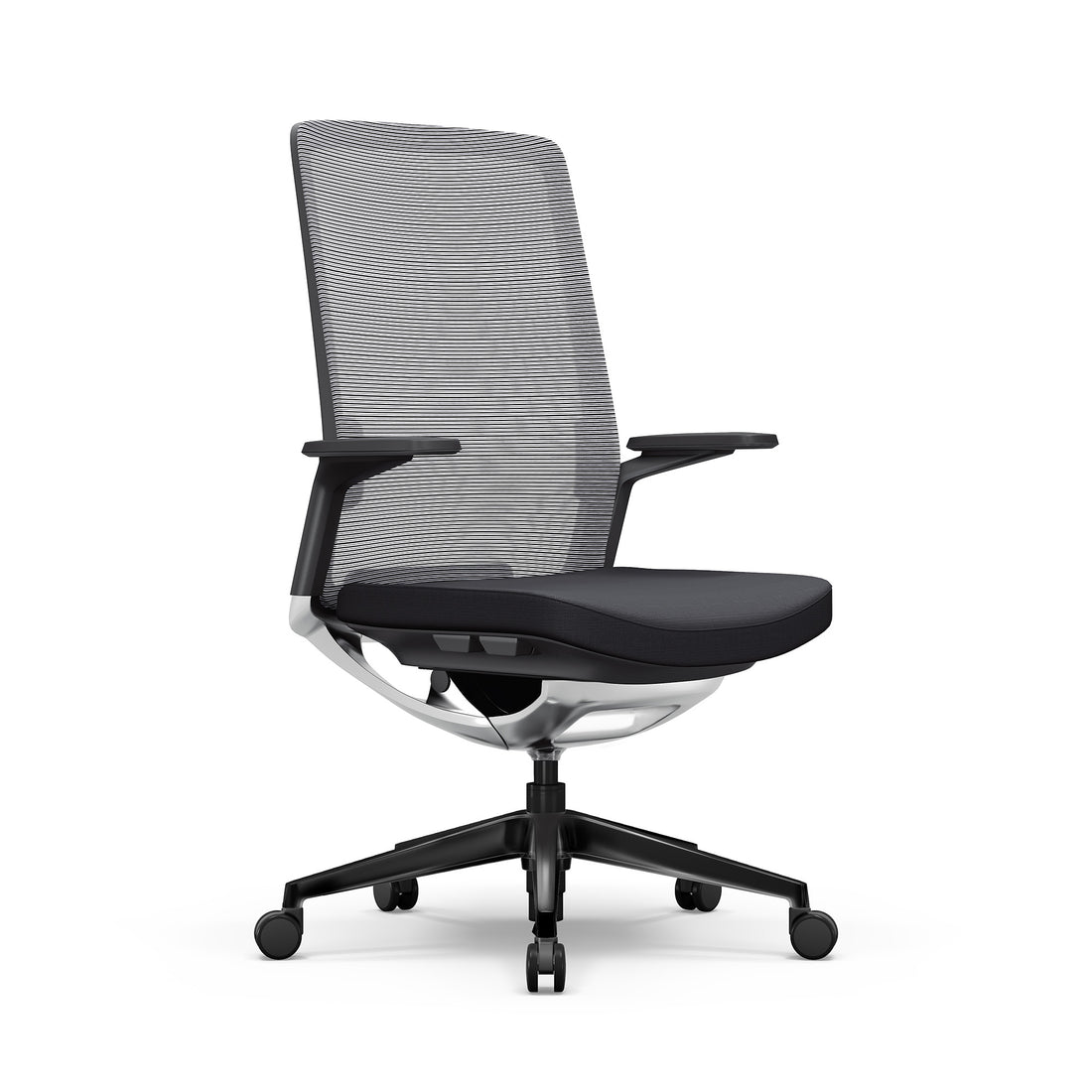By Paulina Wegrzyn.

There are three conditions that I see most commonly as a physiotherapist, and all of these problems are most often seen in sedentary office workers.
Sciatica
Sciatica is a very common condition experienced by many in their lifetimes. Sciatica is the compression or inflammation of the sciatic nerve, a nerve which branches off from your spinal cord in your lower back, runs down your glutes, and down into the back of your legs all the way into your toes.
Sciatica can occur due to many different reasons: the compression of the sciatic nerve can occur anywhere along its path. Most commonly, however, the sciatic nerve is compressed in the lower back, at the level of the L4-L5, or L5-S1 vertebrae. Another common area of compression is underneath the piriformis muscle, which is one of your glute muscles. The sciatic nerve runs directly beneath this muscle. If it gets too tight, it can cause compression of the sciatic nerve underneath it.
How a Standing Desk Can Help Sciatica
Keeping your back mobile is important for individuals with sciatica. A good neutral standing posture will decrease the chances of compression of the sciatic nerve in your lower back. Sitting for prolonged periods of time often causes individuals to sit in a lot of forward flexion in their lumbar spines, which decreases the amount of space between vertebrae and reduces the space for the sciatic nerve to freely travel.
In addition to a neutral standing posture, pelvic tilt exercises performed while standing at your standing desk can help maintain space for your sciatic nerve. Standing also decreases the amount of pressure you put on your piriformis muscle and sciatic nerve, which can result in a reduction of pain.
Shoulder Impingement
Shoulder impingement is a very common cause of shoulder pain. It is common in athletes who often use their shoulders, such as swimmers or cricket players. Shoulder impingement results when your rotator cuff muscles, the group of muscles that attach your upper arm to your shoulder, are impinged when lifting your arm. Mainly this occurs due to overuse, like when a cricket bowler bowls too many balls during a game.
In sedentary office workers, shoulder impingement primarily occurs due to poor posture. While sitting in front of our computers throughout the day, our shoulders tend to round forward, which leads to tight pectoral muscles and decreased space for the rotator cuff muscles to move when we lift our arms over our heads.
How a Standing Desk Can Help Shoulder Impingement
Using a standing desk can help decrease the discomfort caused by shoulder impingement through an improvement in posture. When standing at your desk, keep your shoulders relaxed, and picture widening your collar bones, so that they are further apart. This will bring your shoulders back instead of forward, which will create more room for your rotator cuff muscles at the front of your shoulder.
Next, picture as if you are trying to bring your shoulder blades on your upper back slightly down and into your opposite back pocket of your pants. This will set your shoulder blades back and into the proper position, optimising the positioning of the rotator cuffs of your posterior shoulder complex.
Standing in good posture is the easiest way to decrease symptoms of shoulder impingement. Even this small change may make a large difference to your symptoms! While sitting our necks and shoulders tend to creep forward throughout the day, but it is easier to catch this slow creep forward while standing.
Neck Tension
Neck tension is perhaps the most common complaint of sedentary office workers. Similar to shoulder impingement, neck tension is largely a postural problem that is caused by sitting and looking at screens for prolonged periods throughout your work day.
Neck tension is usually muscular in nature. When the muscles in the back of our neck get tight because we are looking forward all day, they contract and cause us to extend our necks forward. This lets the muscles at the front of our neck become lazy and not fire effectively. This pattern of tension and strength is called forward head posture.
Forward head posture is a cause of neck pain, neck stiffness, and even in some cases, headaches.
How a Standing Desk Can Help Neck Tension
Posture is most important when dealing with neck pain and tension. If your neck continues to creep forward, the tension and pain you experience will remain unchanged.
When using your standing desk, keep your shoulders down and back. Align your neck by tucking your chin down to reduce the poke that creeps forward throughout the day. This neutral neck position will decrease tension and stress placed on the muscles at the back of your neck, and will encourage the muscles at the front of your neck to activate to a larger degree.
Chin tuck exercises are a good way to build the strength of your front neck muscles, or deep neck flexors, throughout your work day.
Start by bringing your chin down into a neutral neck alignment. This is the starting position for the exercise. Next, bring your chin further in towards the front of your neck, as if you are trying to give yourself a double chin. Hold this position for five seconds, and then relax. Do this exercise ten times, multiples times throughout your work day. By strengthening the muscles in the front of your neck, you will decrease that chin poke neck position which causes tension and stress.
Check out the UpDown Desk PRO Series Electric Sit-Stand Desk Collection.
- Standing Desk Posture
- Stand Up Desk Benefits
- How Long Should You Stand At A Standing Desk
- Is A Standing Desk Better For You Than Sitting
- Can Standing Desks Help Lose Weight
- Are Standing Desks Good For Lower Back Pain
- Standing Desk Exercises
- Standing Desks And ADHD
- Standing Desks And Blood Pressure
- Standing Desks Varicose Veins
- Is Standing Desk Bad For Knees
- Is It Bad To Use A Standing Desk All Day
- Is A Standing Desk Better For Your Back

